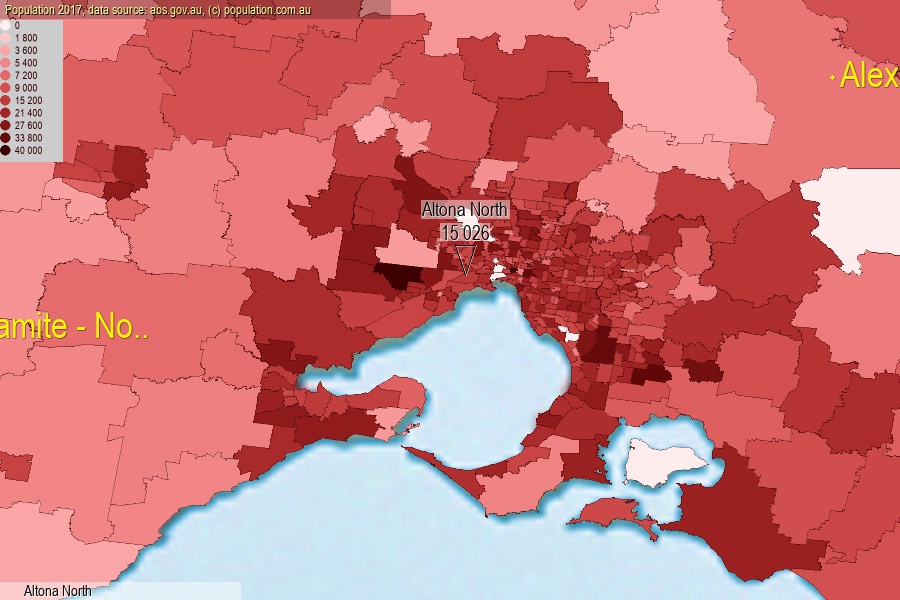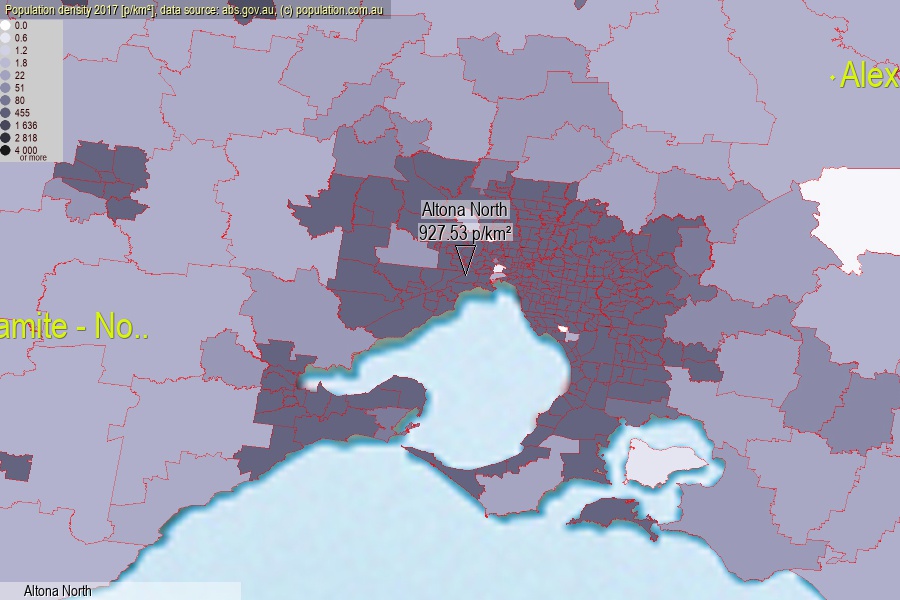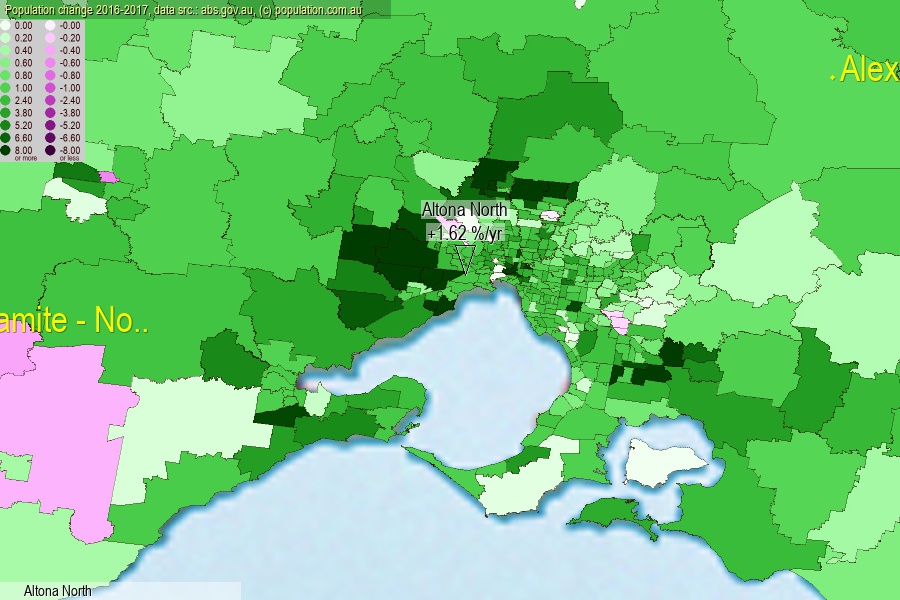 population.com.au
population.com.auLast official estimated population of Altona North (as Statistical Area Level 2) was 15 026 people (on 2017-06-30)[2]. This was 0.06% of total Australian population and 0.234% of VIC population. Area of Altona North is 16.20 km², in this year population density was 927.53 p/km² . If population growth rate would be same as in period 2016-2017 (+1.62%/yr), Altona North population in 2025 would be 17 082. [0]



Click to enlarge. Altona North is located in the center of the images.
Population [people], population density [p./km²] and population change [%/year] [2]
View borders » (new window) [4]
[1991-1992] -0.61 %/Yr.
[1992-1993] -1.41 %/Yr.
[1993-1994] -2.05 %/Yr.
[1994-1995] -2.02 %/Yr.
[1995-1996] -0.80 %/Yr.
[1996-1997] -0.63 %/Yr.
[1997-1998] -0.73 %/Yr.
[1998-1999] -1.34 %/Yr.
[1999-2000] -0.78 %/Yr.
[2000-2001] -1.40 %/Yr.
[2001-2002] -0.64 %/Yr.
[2002-2003] -0.96 %/Yr.
[2003-2004] -0.68 %/Yr.
[2004-2005] -0.29 %/Yr.
[2005-2006] -0.19 %/Yr.
[2006-2007] +0.26 %/Yr.
[2007-2008] +0.75 %/Yr.
[2008-2009] +1.36 %/Yr.
[2009-2010] +1.64 %/Yr.
[2010-2011] +1.44 %/Yr.
[2011-2012] +1.68 %/Yr.
[2012-2013] +1.57 %/Yr.
[2013-2014] +1.91 %/Yr.
[2014-2015] +1.74 %/Yr.
[2015-2016] +1.85 %/Yr.
[2016-2017] +1.62 %/Yr.
[0] Calculated with linear interpolation from officially estimated population
[1] Read more about SA2 and Australian Statistical Geography Standard (ASGS) on abs.gov.au
[2] Population data from Australian Bureau of Statistics (Population and density: 2017; change: 2016-2017)
[3] Digital Boundaries: Australian Statistical Geography Standard (ASGS) 2016.
[4] Border coordinates are simplifyed using Ramer-Douglas-Peucker algorithm.